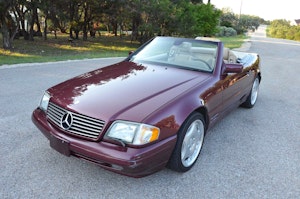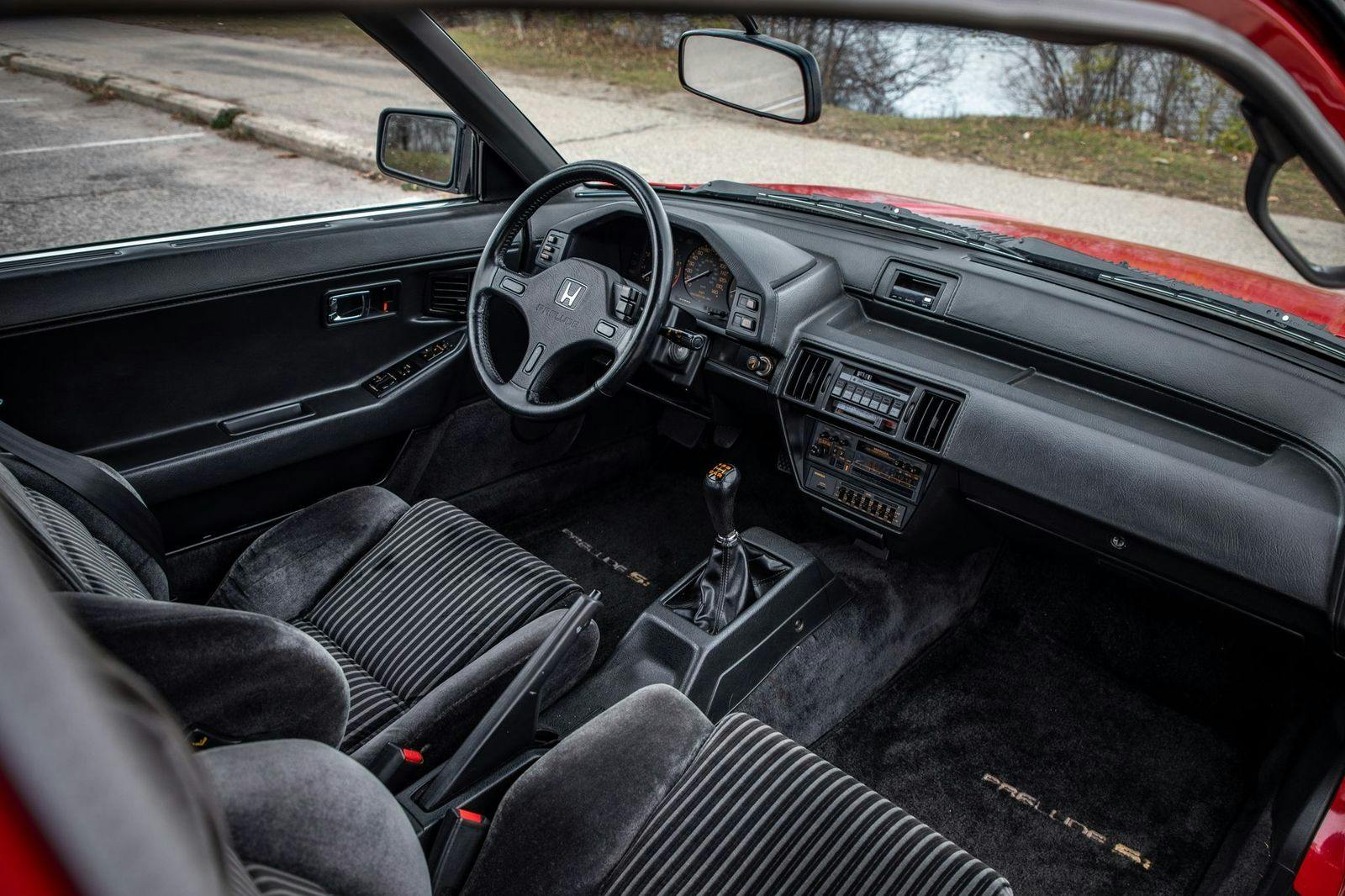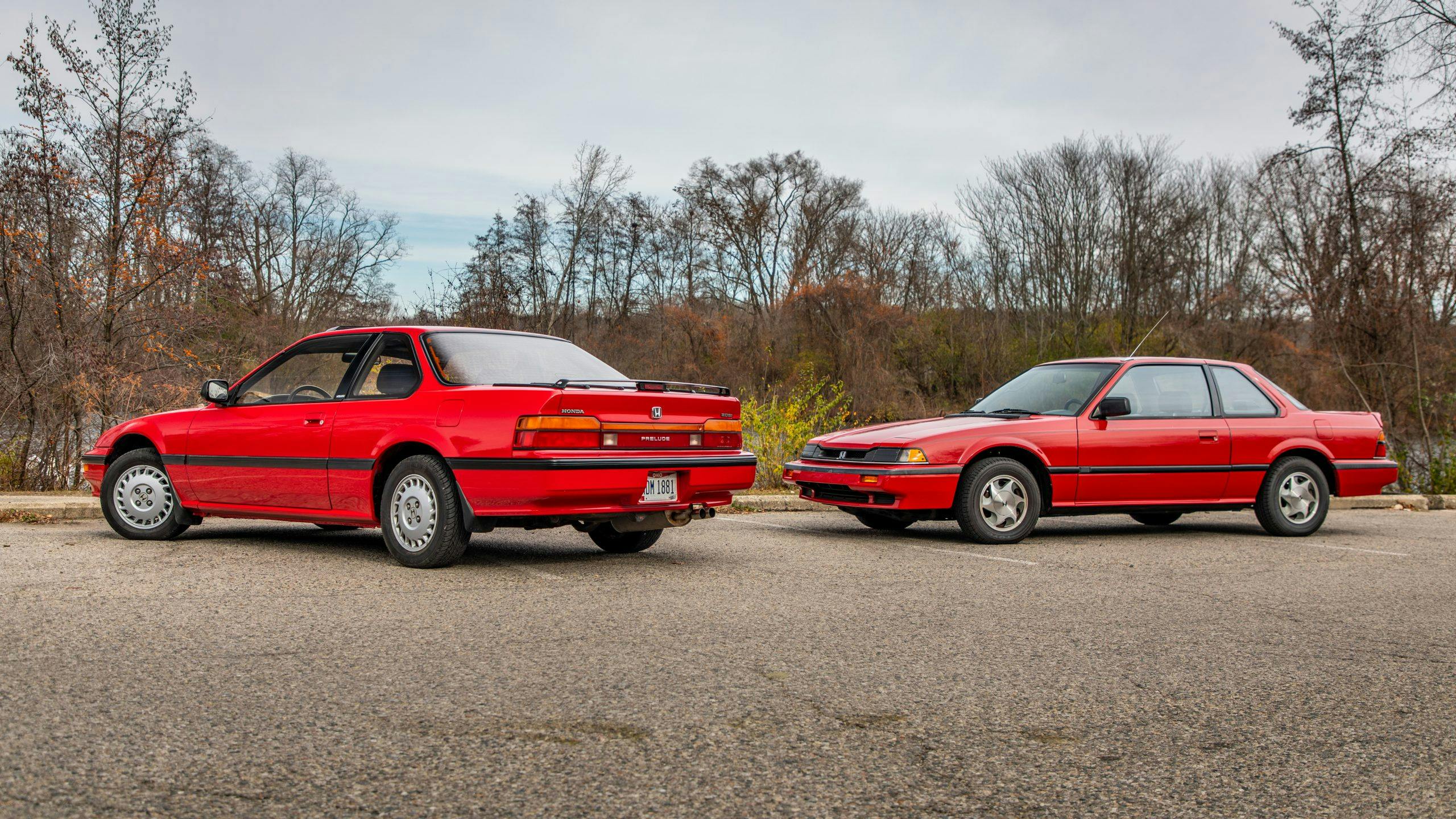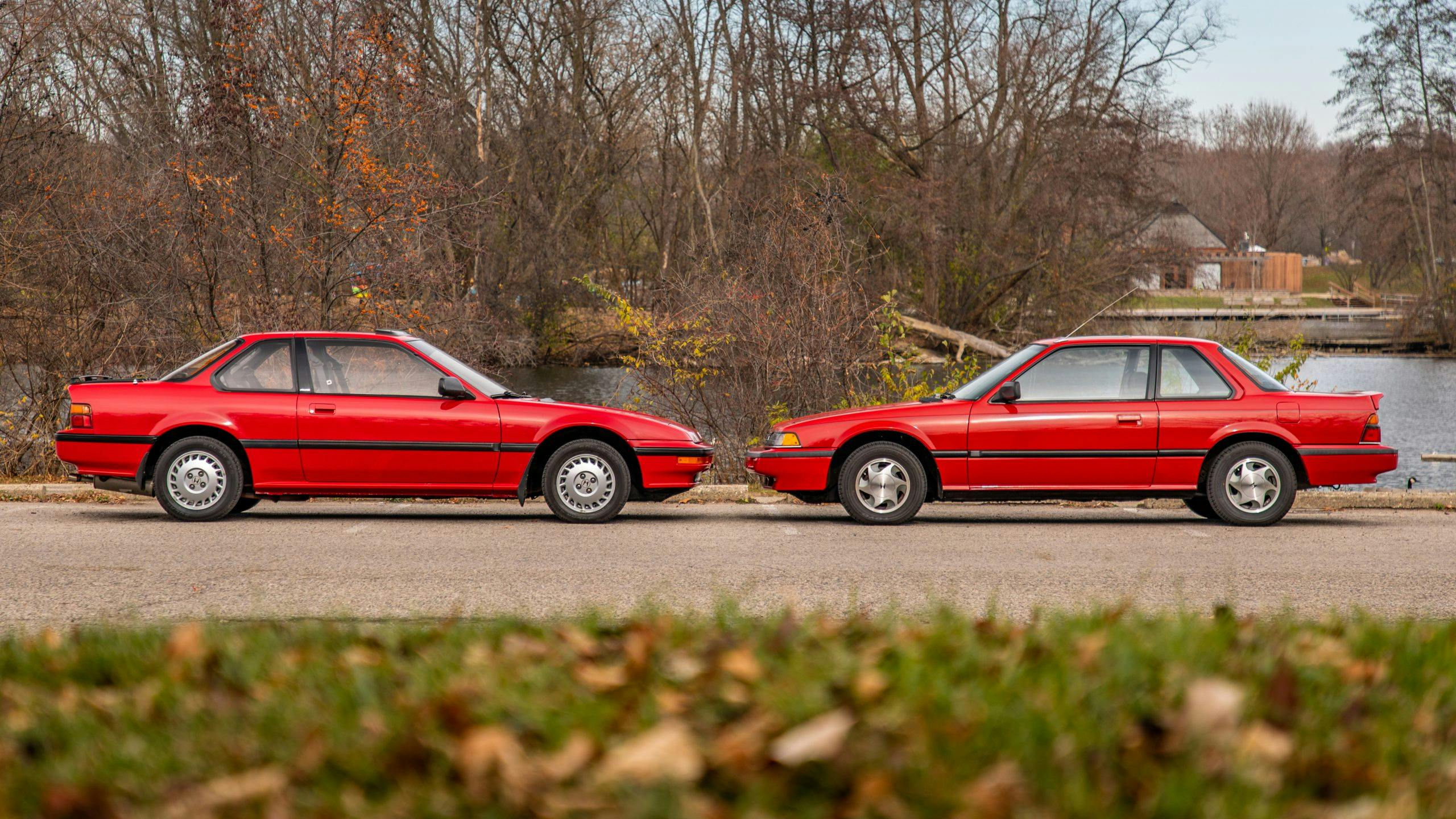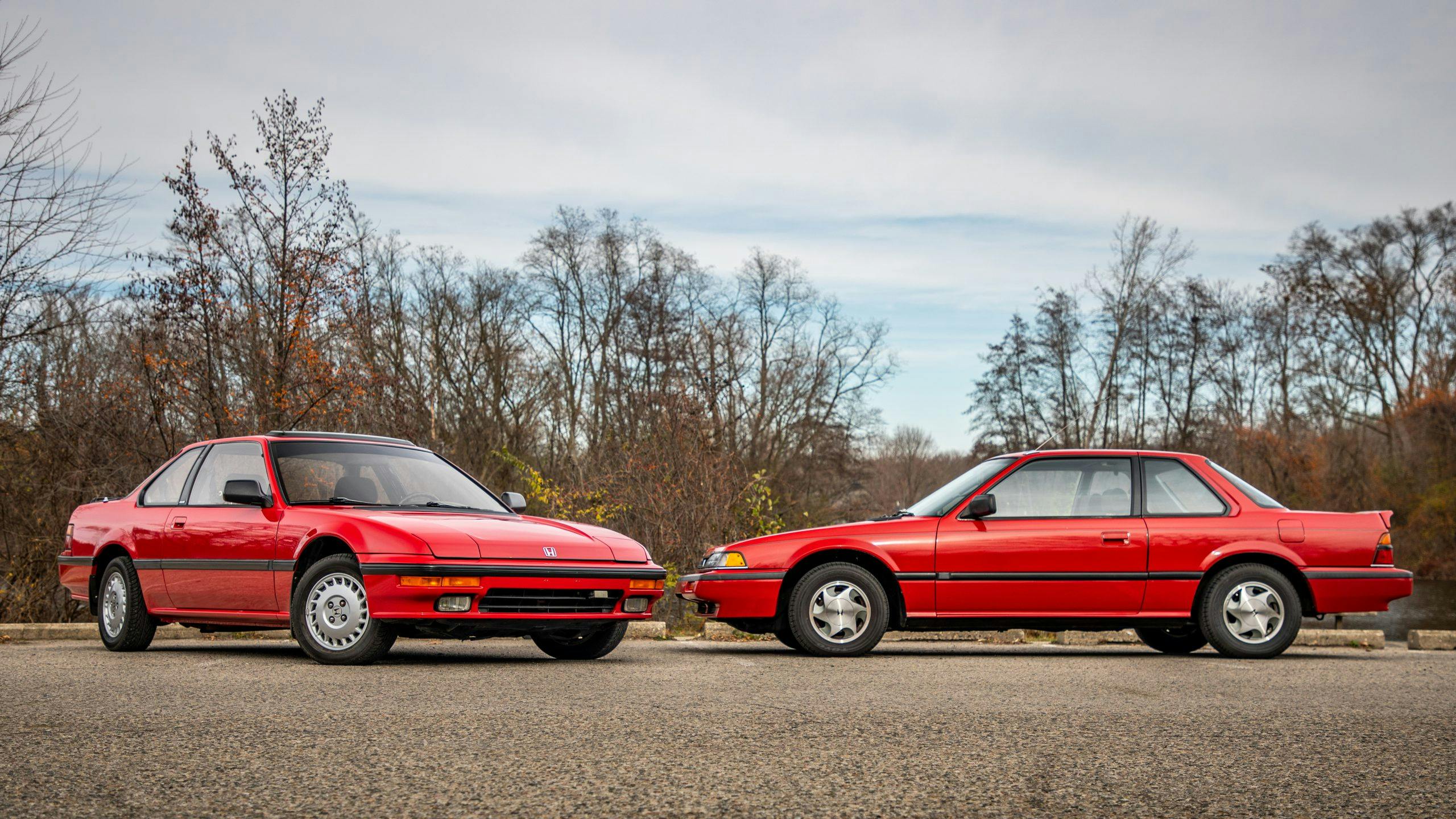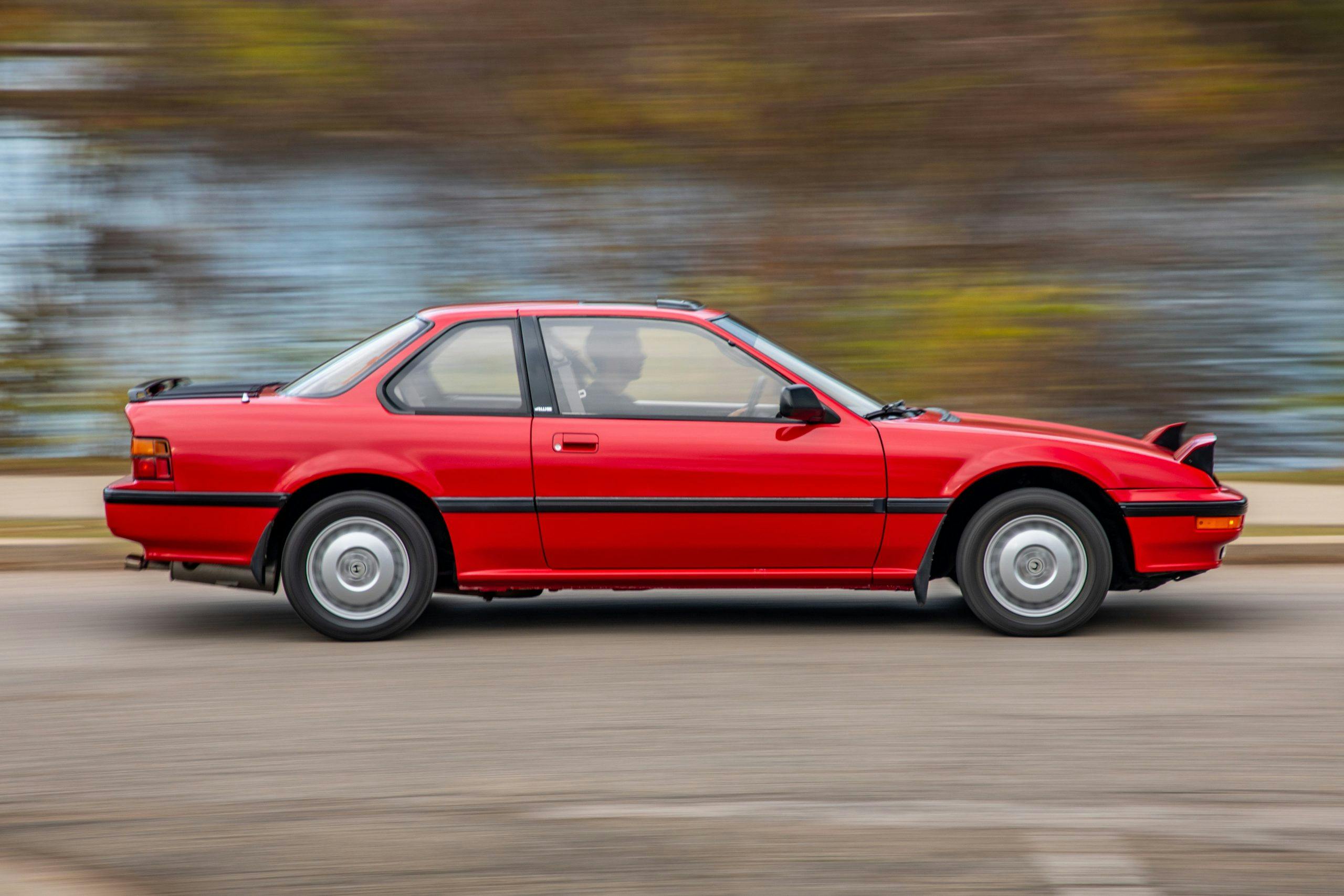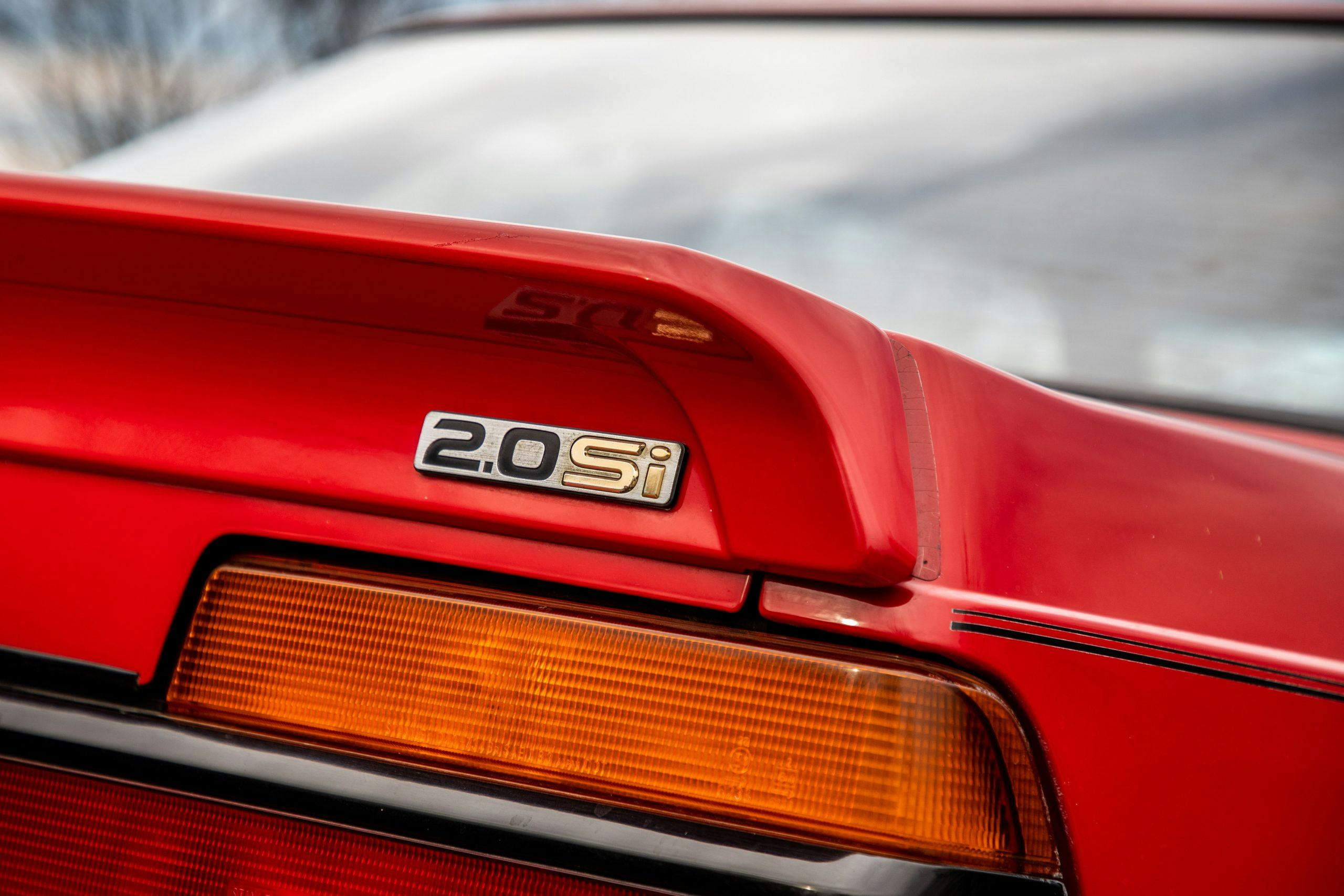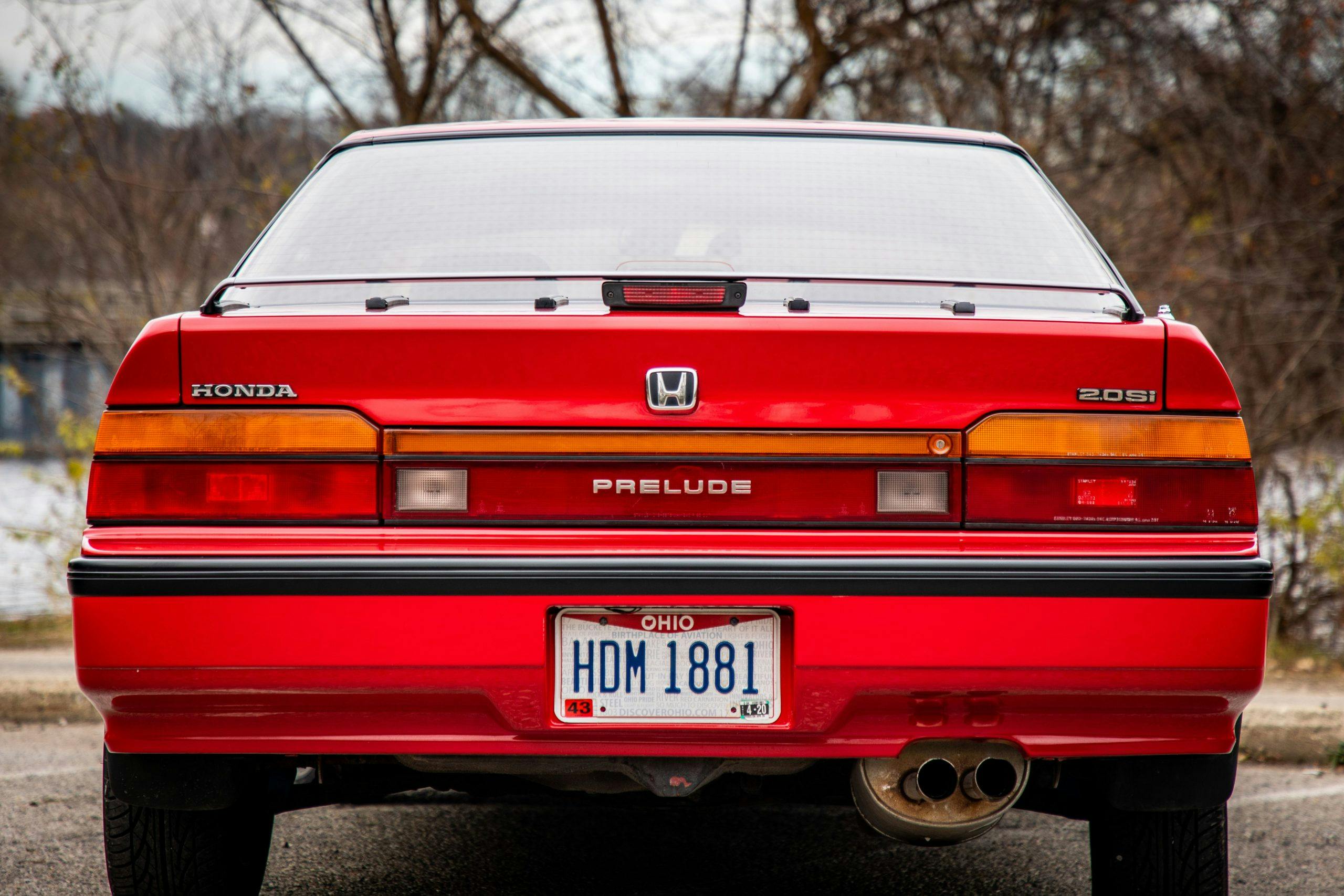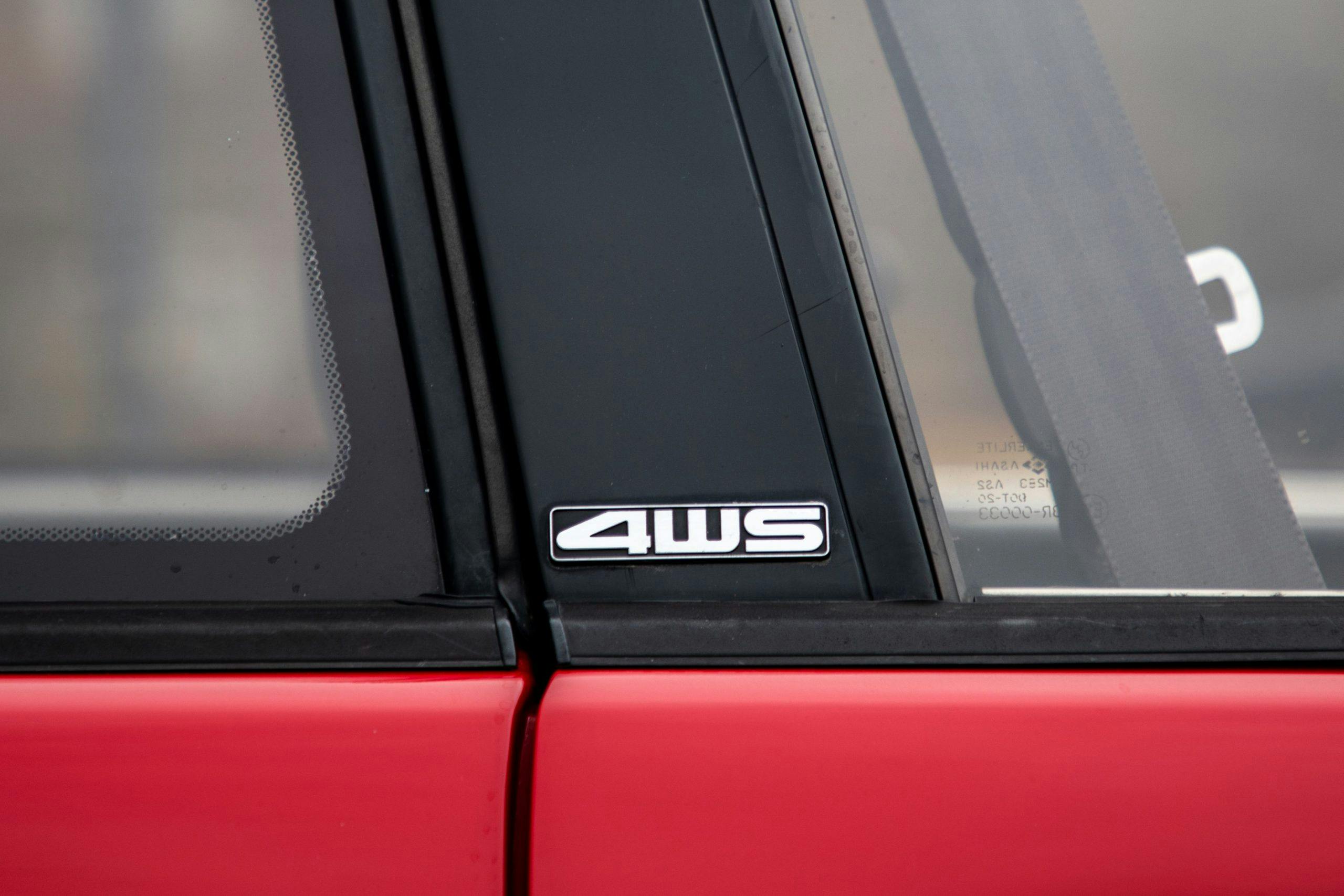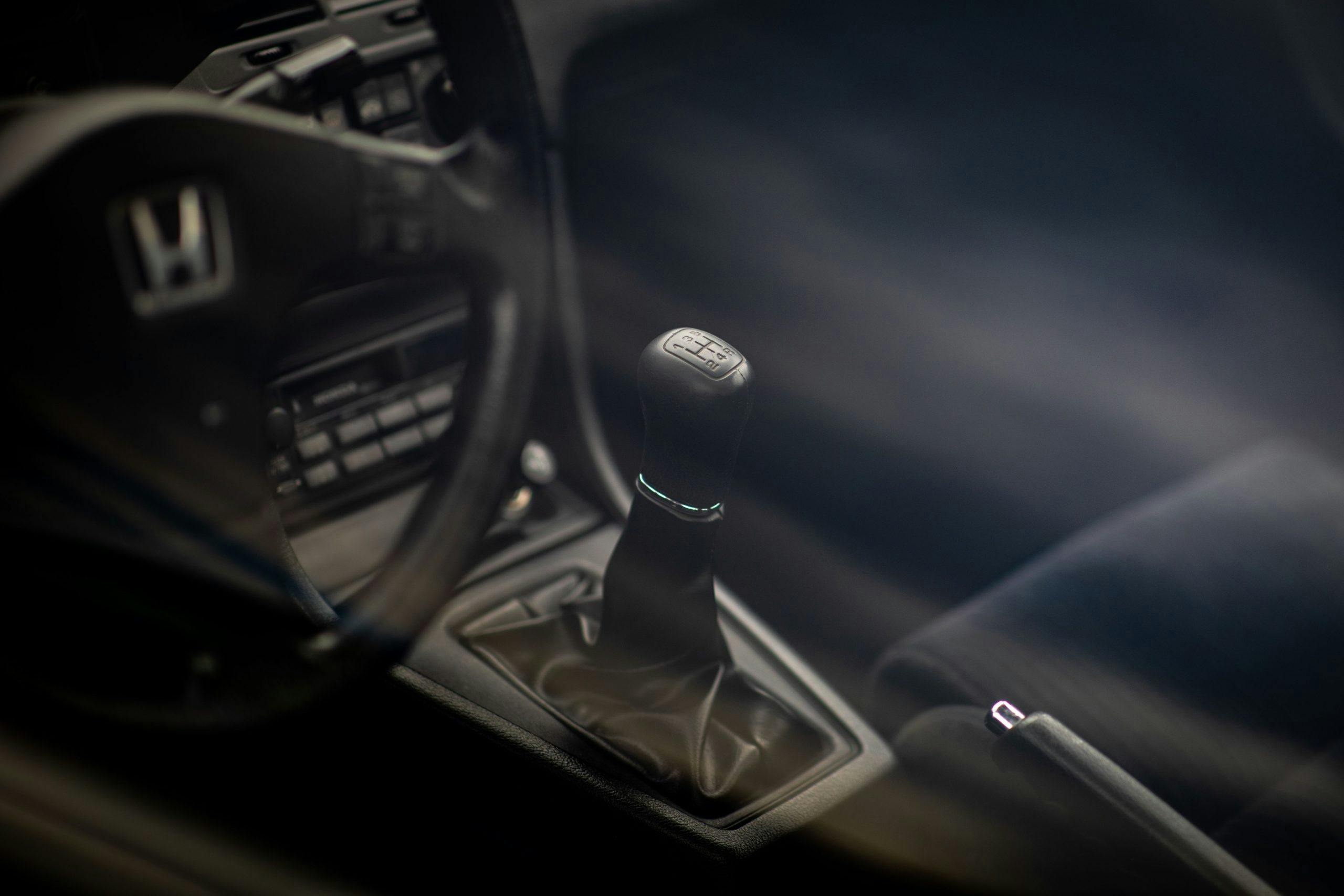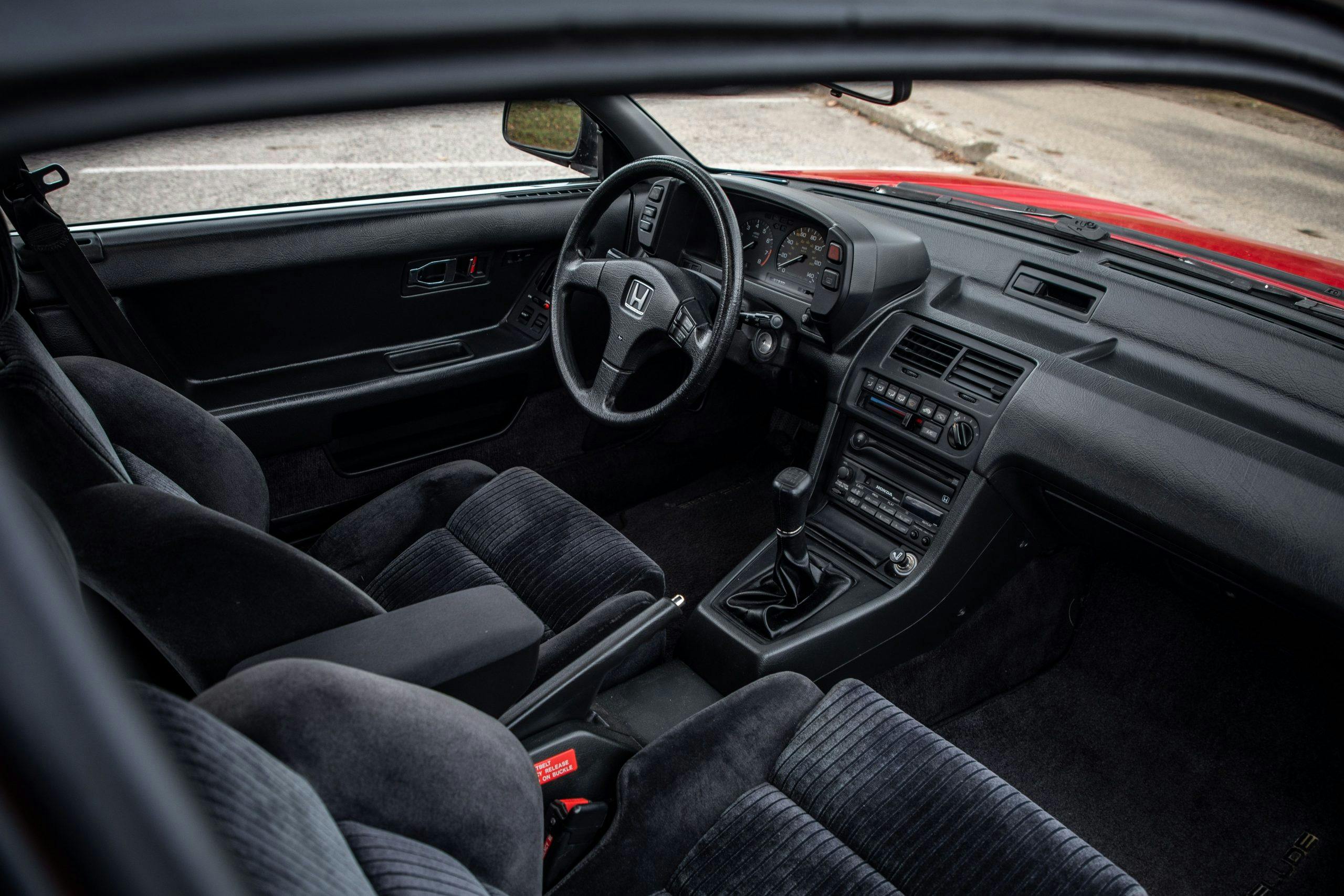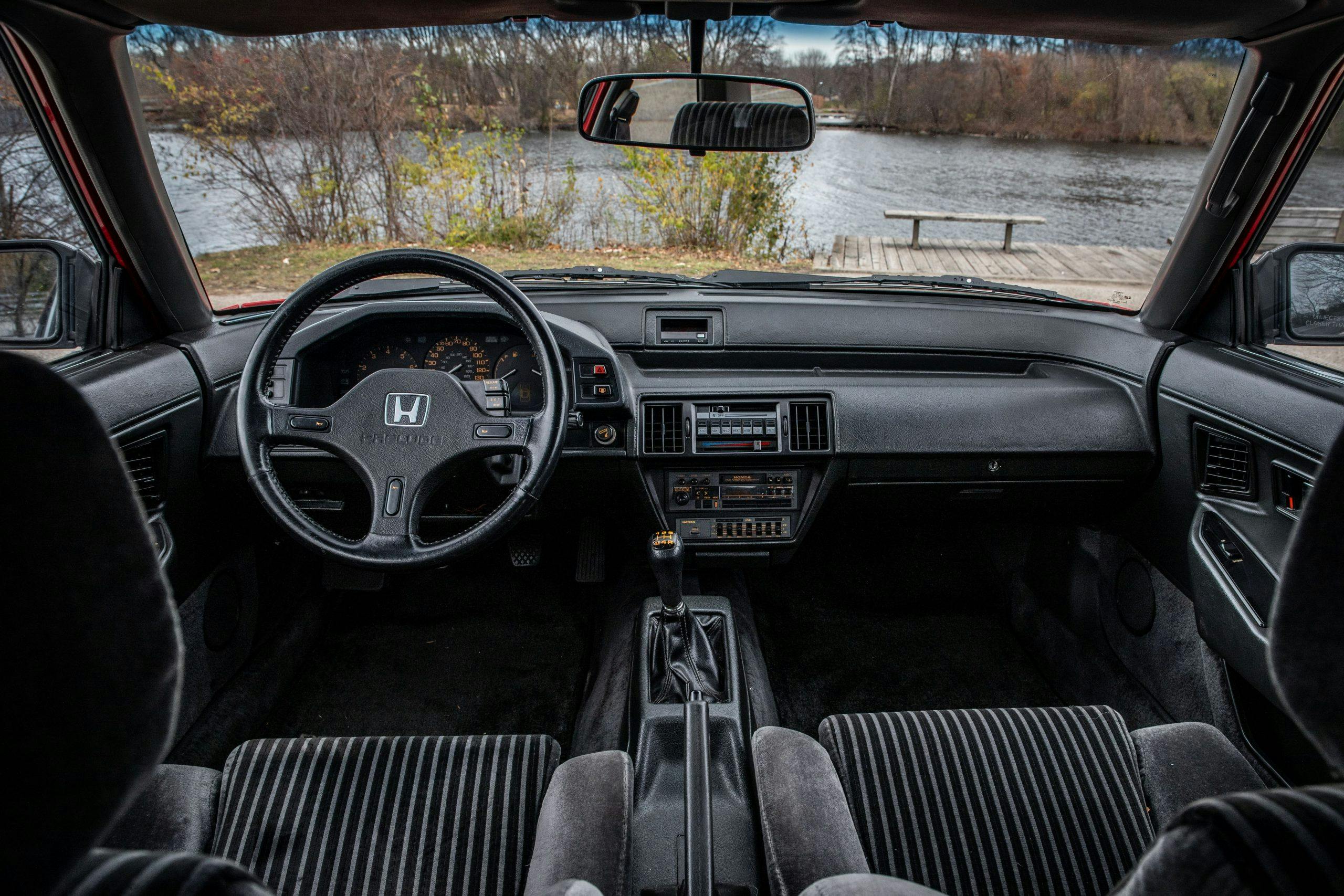Media | Articles
It’s a battle of Prelude generations … and a champion Honda racer picks a winner
Please welcome 2020 Gridlife Touring Car champion Eric Kutil to Hagerty. When our own Larry Webster made the frankly insane decision to buy the best second- and third-generation Preludes available, I wanted someone who truly understands the Honda ethic to drive and compare them. Eric was the perfect choice. You’ll want to follow his 2021 season as his “K-swap” Civic faces a rogue’s gallery of rivals … possibly including my ex-World-Challenge Accord! — Jack Baruth
They call it the “Bubble Era”, referring to Japanese cars of the late Eighties and early Nineties. Hands down, it was the best time for Japanese manufacturing and will never be matched — especially as we start trending toward electric, self driving cars without any soul whatsoever. This era was all about the driving experience, not just getting to the destination. The two cars in question are a second gen 1987 Honda Prelude Si and a third gen 1988 Honda Prelude Si. Separated by a single year, they share a lot of similarities (as expected) but are also vastly different once you dive into the details and compare them directly to each other.
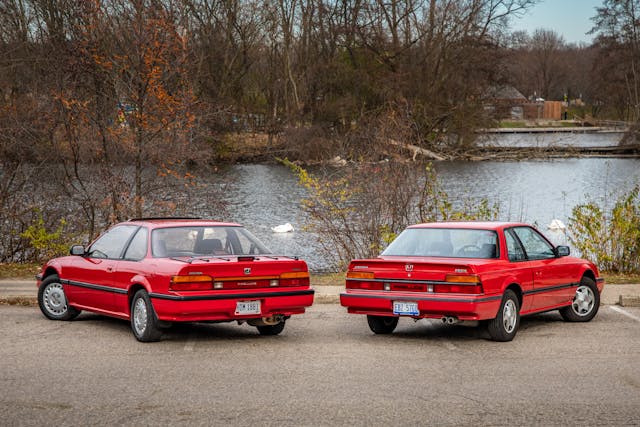
I’m definitely no stranger to this era of Honda as I have owned quite a few example in my lifetime and have grown to adore each one of them. It started out at a young age being addicted to racing videos games like Gran Tursimo, NFS, Forza, Tokyo Xtreme Racer etc, where I got introduced to these cars. However, it wasn’t until I started following motorsports where I realized their true potential and in many cases, complete domination like the Realtime Racing Integra Type R’s, BTCC Accords, and the all mighty NSX in JGTC. My experience with these era of Hondas started out with my first car, a 2001 Integra GSR, followed by a 1991 Integra (XSi replica) both of which are long gone and highly missed. My current stable consists of a moderately modified 1998 Integra Type R that mostly just sees weekend cruise duty and a heavily modified, track focused 1992 Civic Si. Even though the ITR is known to be the pinnacle and king of FWD Honda’s, for me nothing matched the experience and emotion of that ‘91 DA Integra. Until now.
Preludes were never really on my radar. Like most Honda enthusiasts I was focused primarily on Civics and Integras due to their racing pedigree. The Prelude on the other hand, always seemed like a bastard child to me — so when I rolled to Larry Webster’s house to meet his ’87 and ’88 examples, both finished in Phoenix Red R-51, I had little idea of what to expect.
1987 Prelude Si (Gen 2)
Marketplace
Buy and sell classics with confidence
Like most Hondas from that era, the ‘87 is definitely subtle, no means flashy in any way shape or form. An elevated ride height, large bumpers, tiny alloy wheels wrapped with ridiculously tall/skinny tires, thick black rubber moldings surrounding the entire body contrasted by thin cheesy looking chrome outlining most features, a misleading front grill/faux headlight setup. Might look like headlights but surprise, they’re POP-UPs! It’s cheesy/retro 80’s styling and basically perfect! Probably my favorite exterior feature was the color matched spoiler that caught me off guard when I realized it was soft and squishy as I closed the trunk. Who doesn’t love rubber spoilers!

The interior is a very special place and felt like home to me. My favorite feature of late 80’s/early 90’s Hondas is the super low beltline and a massive greenhouse glass feeling inside the car and this Prelude had just that! It reminded me of what I missed most of my DA Integra; it’s a feature that is almost entirely extinct nowadays. The dash is small, super low, close to the firewall, and isolated from the center console. It gives you a very sporty, motorsports vibe due to its minimalistic, two step design, especially due to the driver’s fighter-jet-style center gauge cluster. The best button? The headlight pop up/down switch, which makes it feel like you’re deploying missiles at slow traffic in front of you. The dash material and texture was very pleasant even though the fake plastic stitching was pretty obvious. You can tell Honda made an attempt at luxury with a low budget but I think it worked, kinda. The two pockets on top of the dash are also such a nice feature to hold your precious belongings like your smartphone, almost as if the designers from the 80’s expected that technology to control our lives and attention. The ugly orangey/brownish color palette on all the buttons, gauges, and elsewhere in the interior definitely made feel old, however.
The small dashboard also gets you up close to the steep windshield and hood. This gives you the vibes of a video game bumper cam view. In general, the cabin gives you a significant illusion of speed due to how close to the ground you are and how much you notice everything whizzing by you. With the sunroof open, there’s a strong convertible vibe to the experience.
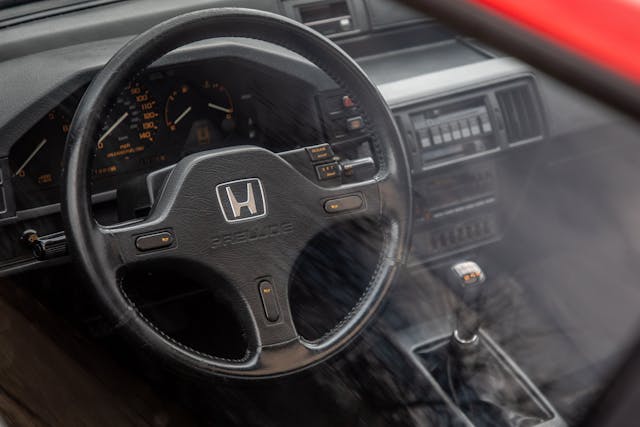
The steering wheel hand position was a little awkward due to the thumb’s pockets being below the centerline of the wheel which made you feel lazy. Making a choice of which one of the three horn buttons I wanted to press in a panic was also interesting. The tilt column really only gave you very few options unfortunately, all the way up and horizontal like a bus or down and vertical directly into your thighs. Having long legs and not being the size of an average Japanese male from the 80’s really made it basically impossible to heel-toe. However, even though I’m 6’2”, I still managed to fit inside reasonably comfortably with an inch or two of headroom. The seats were absolutely amazing: super plush with such a soft bottom cushion and large supportive side bolsters that did a reasonably good job holding you in on spirited drives. The rear seats? What rear seats? Unfortunately, the biggest annoyance by far was the lack of a center armrest. You forget how crucial they are until you have nowhere to rest your arm besides just let it dangle and flop around.
After driving the car, however, I think I realized why the designers chose not to incorporate an armrest. It’s because shifting this car and rowing through the gears is such an absolute pleasure that it always gives your arm something to do. You can tell immediately the shifter mechanism is a solid linkage connected directly to the shift forks. This gives you a very satisfying and mechanical feeling that has some weight to it. You can feel it go into every gear with confidence with minimal noise, clunking and very little play/slop. The throws side to side are short but long going forward and back. It might not sound sporty but it actually made each shift exciting as you throw into each gear, especially 3rd to 4th. The lateral shift from 4th to 5th was a little stiff that took some time getting used to but other than that, the shifter was great! The clutch had a very similar mechanical feeling that is common on almost all old Hondas. It’s soft but consistent with a very precise activation point you can feel in the foot. It’s essentially all up to the driver to have a smooth launch and shift, otherwise the car won’t help you and will punish you with significant vibrations and/or a stall. Once you get used to it and get it right and it becomes second nature! Another huge benefit that results in a quick but smooth shift is a complete lack of “rev hang”; you push the clutch in and the RPMs drop immediately.

The Prelude has a soft and comfortable ride with a ton of minor vibrations, squeaks and rattles. It’s those kinds of noises that turn into static white noise which for me personally is a very comforting sound. The car as expected is very tame, with minimal exhaust noise and super easy to cruise around the rough streets of Michigan. Bumps and potholes are essentially non-existent due to the ridiculous ride height, super soft suspension and tall balloon tires. The steering feel is super light but precise and predictable. You feel directly connected to the front wheels and the road due to the hydraulic power steering system, another gem from the golden era of Hondas. It continues to impress as you start to drive the Prelude harder and test the chassis. Unfortunately, the lock to lock ratio is by no means short, so you have to put some angle into the wheel during spirited driving but, once again it’s expected out of an 80’s car and not a dealbreaker as a result.
The chassis and suspension geometry setup overall is extremely playful and a complete delight. The super tall ride height and soft springs result in massive pitches and rolls under quick steering and brake/throttle inputs. This might seem like the opposite of what you’d want out of a sports car but if anything the body roll amplifies the fun of the chassis. You just can’t help but giggle on how ridiculously fun it is. While the front pitches and rolls, the rear dances around and offers very good initial rotation. Give it a quick lift off the throttle during turn in and you get some joyous lift-off oversteer. The more you push it and the faster you go, the more exciting it gets! Even with all the body roll, the car still manages to change direction rapidly due to its light weight. Slaloming is especially hilarious as the skinny tires try to keep up with the quick transitions and do their best to defy the weight transfer caused by the massive body roll while the rear seems to be sliding around. Unfortunately, the tires can only do so much and become significantly overworked in longer sweepers. After the fun initial rotation during a quick turn in, the oversteer quickly turns into understeer as the car starts to take a set, and asks for too much out of the front tires which results in a loud howl and squeal. No surprise, really.

The 2.0 liter engine though, was definitely a surprise when compared to its relatives. It had some decent low end power/torque and continued to pull smoothly all the way up to redline.The powerband is consistent and broad and not peaky like a more modern VTEC engine. As a result, it really didn’t matter what gear you were in, it just pulled and it did that pretty well. The induction noise was very cool with a throaty and deep howl, while the exhaust remained pretty silent. The broad powerband made driveability super easy, especially cruising around city streets and passing on the highway. Each gear was also close and somewhat short which helped acceleration. Cruising at 75mph in 5th at 3500 rpm was a little high in the rpm range but not terrible. You can tell the engine was still very happy there which made accelerating and passing possible without downshifting. One annoyance: significant torque steer, both on-throttle and off. WOT caused a strong pull to the left, while letting off would pull the car immediately to the right, enough to require a decent amount of steering angle to correct. I’d put my money on the root cause being wear & tear, possibly a loose control arm or worn engine mount.
Last but not least, was about stopping the fun with the brakes. Common with most old and worn Hondas I expected a soft and spongy pedal feel but that wasn’t the case here. The pedal was surprisingly good with a stiff initial feel and a progressively harder force through the entire travel, a pleasant surprise. Don’t apply too much force though because locking up the fronts was way too easy, an issue once again related to the significant body roll and skinny tires.
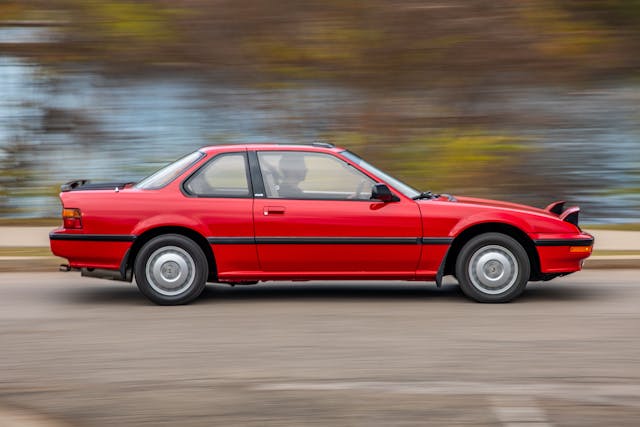
1988 Prelude Si 4WS (Gen 3)
Now that we know the 2nd gen car pretty well, let’s see where its successor differs.
The first thing you notice is how much more sporty and modern the design is. It went from being kind of plain and very Accord-ish to actually standing out and if you squint really hard, and I mean really hard, almost Ferrari Testarossa-esque. The body shape and proportions are very similar between the two but the 3rd gen just looks so much lower and wider, making it way more aggressive. Most of that comes from the front end redesign with a significantly lower and sharper nose, more dramatic hood shape, deletion of the grill and faux lights, less fender mass above the wheel wells, and a less steep windshield. The same goes for the rear with much sleeker and less awkward tail lights. The wheel arches also pop while housing a much sportier wheel and tire package. The body overall had much less black rubber, due to thinner moldings and modern mirrors, while also deleting the cheap chrome outlines. Overall, the body design is a significant upgrade; sportier, more modern and more aggressive. It’s a sports car that finally stands out mainly due to the super low hood profile. Personally I prefer the 3rd gen and it will always be a classic!

The interior has a very similar feel and presence to the previous gen. Super low dash and hood with amazing visibility with the (still) pretty tall windshield and thin pillars. All of the good stuff from the 2nd gen carried over to the 3rd gen which made me very happy. The dash shape was obviously modernized with fewer sharp edges while connecting to the center console in a way similar to the NSX. This made the interior feel a little tighter around the driver. The double dash layout and driver gauge cluster pod remained but luckily, the ugly amber/brown coloring on the switches didn’t. Those were all replaced with significantly more modern white lettering that helped brighten up in the interior a lot. The dash material however, looked a little cheaper in my opinion. The fake stitching was also gone.
One of the best improvements was the perfect steering wheel that looks really good even by today’s standards. Perfectly placed thumbs pockets directly in line with the center of the wheel helped improve the driving feel and always got you ready to attack corners. The tilt button was also a new feature that I’ve never seen on any Honda, new or old. The seats had a similar shape which was already great on the previous gen but the bolsters didn’t seem to hug you as much. Interior room was about the same.

The first major difference you notice with this Prelude, and honestly, a pretty big let down, is the shifter. Just testing the mechanism out while parked, you can immediately feel a significant loss in that amazing mechanical feel and high quality that made the 2nd gen so special. The shifter feel is almost too light and has this very audible and cheap clicky sound as you pop it into each gear. Honestly, the best comparison to this is my old Logitech G25 video game shifter — which is not a compliment. Even the shift knob looks cheaper. The reason for this change in feel? The shifter mechanism went from a hefty solid linkage to cables. A design way ahead of its time as pretty much all modern FWD manuals use this setup. On the positive side, you get shorter throws and less effort to make them.
The clutch pedal feel was mostly similar but a little more driver friendly. This made stop and go driveability easier but at a cost of slightly slower shifts in spirited driving, probably due to a heavier flywheel.

A couple of positives, a couple of negatives but overall not that much different. Here’s where it gets a little wild and that’s because of the most famous feature on the 3rd gen Prelude: 4 wheel steer. I’d never driven a car with rear steer so I was extremely eager to get on the road to experience it. However, I didn’t want to know what exactly the rear wheels did relative to the steering input before the drive. I basically wanted to go into the test drive with minimal knowledge of the system to determine if I could actually feel what the rear wheels were doing behind the wheel, at speed.
My mind was immediately blown when I made a u-turn. The turning radius: WOW!!!! Under full lock, the rear wheels are turning opposite to the fronts which was pretty obvious inside the car. That cuts the turning radius significantly to the point where a u-turn is possible anywhere and everywhere. Tight parking lots become a playground as you maneuver around them with ease.
The fun doesn’t stop there though, because at speed, swerving back and forth was another insane experience. I honestly couldn’t believe what was happening because it was such an odd sensation but so unique. In the previous gen, a quick turn to the left for example would result in a small delay while the front tires gathered grip, causing the car to heavily lean onto the right front and eventually have the rear follow the path of the front. If you followed that with a quick right, then left, etc. in a slalom, that would result in even more delays in weight transfer with way more body roll. This car relied solely on the front tires and suspension to do the hard work like most cars.
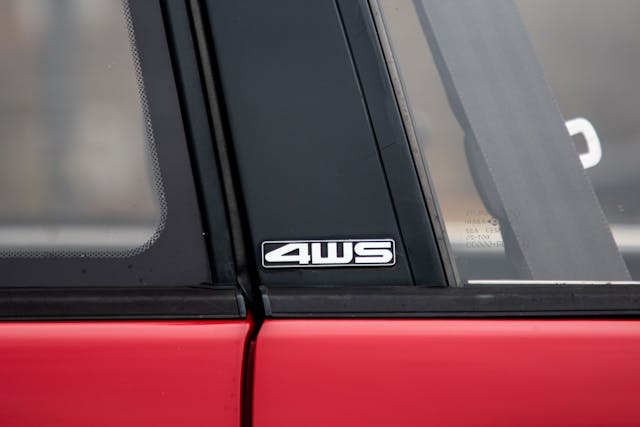
With the 4 wheel steer Prelude, the same quick left input would result in the car immediately changing directions with minimal, almost non existent body roll, while the rear followed its own radius, parallel but ahead of the path of the fronts. It’s difficult to explain but the car essentially transitioned laterally, like moving sideways while walking forward. It was such a unique experience but took some time getting used to because the car would continue to change directions so rapidly while staying completely flat to the ground. With some practice, this car would decimate the competition in a slalom. This condition was present at all speeds which was another surprise on the highway. Need to pass someone? Easy, just slide on over sideways to the fast lane! At speed, you can tell the rear wheels were doing something different compared to the parking lot u-turns. The rears were now turning in the same direction as the fronts, not opposite. This is what causes that weird lateral transition.
So how did that rear steer affect spirited driving? That’s a tricky one, mainly because the playfulness of the rear end on the previous gen Prelude was nonexistent here. No more corner entry rotation with that slight, yet forgiving oversteer. It was basically impossible to get the rear end to slip no matter how much you trail braked or rapidly transferred weight forward in an idiotic fashion. The car would change direction quickly but the back was planted no matter what because if you focused on the outer rear wheel alone, it’s essentially toed in, significantly. I guess it’s great for stability and safety, but not ideal for spirited driving. Another issue I noticed especially in roundabouts, is you had to use a ton of steering wheel angle (way more than the 2nd gen) to overcorrect for the rears which are turning the same direction. It was at that point when I realized the rear steer was controlled by steering wheel angle, not speed.
To explain the rear steer system in detail: Between 0 to 180 degrees of steering angle, the rear wheels turn the same direction as the fronts. Great for switchbacks, slaloms and lane changes. Once you go past 180 degrees, the rear wheels start to straighten out and point forwards. It isn’t until you steer past 270 degrees that the rear wheels switch directions and turn opposite to the fronts which is phenomenal for parking lots, u-turns, parallel parking and city driving. So what happens when you activate the opposite rear steer at speed? It’s pretty scary and I definitely wouldn’t recommend it because it’s like driving a forklift.
Normally, you would never go past 270 degrees of steering angle while driving at speed but it’s possible in very specific scenarios. That would be right angle turns at intersections, and I found myself trying to activate it at every one in the city like a lunatic. The result is stupid fun! I started to think what other scenarios would end up with a sketchy result and the thought was pretty terrifying. If you ever had to catch a big slide due to slick conditions, or over driving, it would be nearly impossible to catch. Medium steering angle would prolong the slide while enough steering angle to activate the opposite rear steer would most likely result in a severe overcorrection. Probably why this technology didn’t last long, especially when you factor in added cost, complicated parts and extra weight. Needless to say, I did not attempt this on the street, but I would be curious to try it on a skid pad.
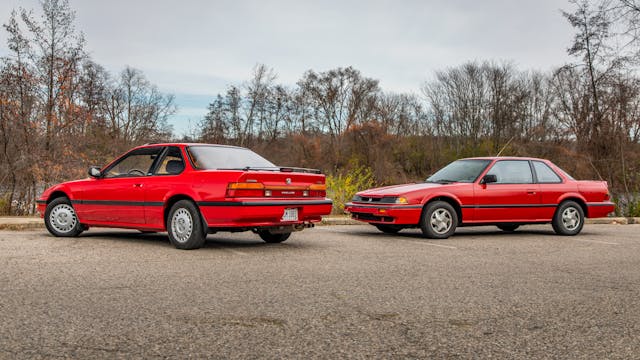
Conclusion
While the 2nd gen Prelude was a fantastic machine that impressed in almost every category, the same could be said for most of the other Hondas from that same year. The Prelude might edge them out slightly with its larger, more torquey 2.0L engine, modern double wishbone suspension design (compared to torsion bars on Integras/Civics) and luxury features, but probably not enough to make it unique. As a result, it was probably a difficult choice to make back in the day between all those models and the decision most likely came down to personal preference.
The 3rd gen Prelude on the other hand was a completely different story. It was so unique and different that it made a huge impact in the automotive world. Thanks to its sleek styling and famous 4 wheel steer feature, it’s a car that will be forever known and never forgotten. However, unique and different is not always a good thing . While the 4 wheel steer is a pretty cool feature, and a mind blowing experience, it’s also unnecessary and not really needed. There’s a bunch of reasons why this technology didn’t last long that I won’t get into — but after driving it, I sure am glad those engineers executed their crazy ideas, at least once.
At the end of the day, after both test drives, I still think the 4WS won me over. It was a more memorable driving experience because of it even though it was a little awkward in some situations. Heck, I could just drive in circles within a parking lot and never get bored of it. I would brag to all my friends that my turning radius was better than theirs. I would show everyone over and over again what my rear wheels could do. It’s just such a unique and different car and as a result it’s cool especially in modern times! It also looks fantastic! In short: both Preludes are great, and if you can afford both you should get both, but the third-gen is truly special, so it’s the winner.


